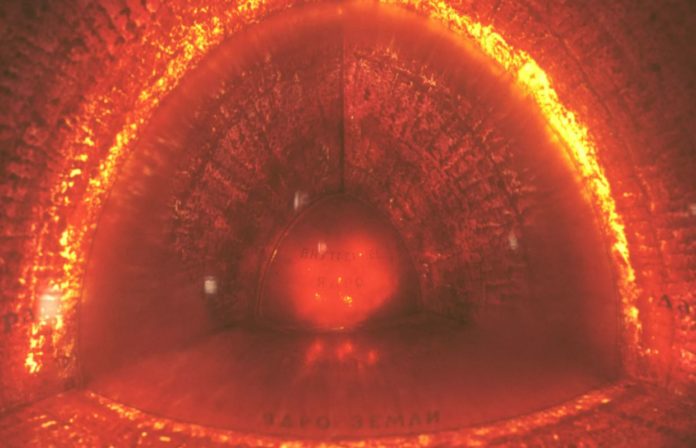The inside of our planet, Earth, is layered like an onion. At the center is the iron-nickel core, which is surrounded by the thick mantle, and on top of that is the outer shell or “crust” where we live. The molten iron core is essential for the planet’s ability to support life by forming a magnetosphere that shields it from carcinogenic cosmic radiation.
New research suggests Earth’s largest iron deposit, which constitutes its core, is rusting.
Our planet’s core is made up of iron alloyed with nickel and is located about 2,900 kilometers (1,800 miles) beneath the surface. This molten core has played an important role in Earth’s evolution. As a result, the research’s findings that it could be affected by a regular occurrence like rust, which is known to degrade ferrous materials, raised worries.
When iron is exposed to moist air or oxygenated water, a chemical reaction occurs, resulting in a reddish-brown substance.
When iron comes into contact with moisture in the form of water or a “hydroxyl-bearing mineral” at a pressure of close to a million atmospheres, it “forms iron peroxide with the same structure as pyrite,” according to the study, which was co-authored by Jiuhua Chen, Professor of Mechanical and Materials Engineering at Florida International University.
In layman’s terms, the National Science Foundation’s research indicated the likelihood of rust development since they were carried out at a pressure that exactly matches the conditions in Earth’s deep lower mantle.
“This rust could shed light on the deep-water cycle in the lower mantle and the enigmatic origins of ultralow-velocity zones (ULVZs) – small, thin regions above the Earth’s fluid core that slow seismic waves significantly,” write the authors in their study, adding “It could also help answer questions about the Great Oxidation Event (GOE), which marked the beginning of Earth’s oxygen-rich atmosphere some 2.5 billion to 2.3 billion years ago .”
Despite the findings of the study, it is extremely difficult to provide concrete evidence of the rusting process occurring, according to Shanece Esdaille of Florida International University’s Center for Study of Matter at Extreme Conditions and Department of Mechanical and Materials Engineering.
Scientists aim to learn more by examining the massive plumes that erupt from volcanoes. According to experts in the subject, if rusting has occurred at the Core-Mantle Boundary (CMB) over time, a layer exhibiting unique telltale “seismic signatures” must have previously developed.
Image Credit: Getty
You were reading: New Research Reveals A Catastrophic Change in Earth’s Inner Core
